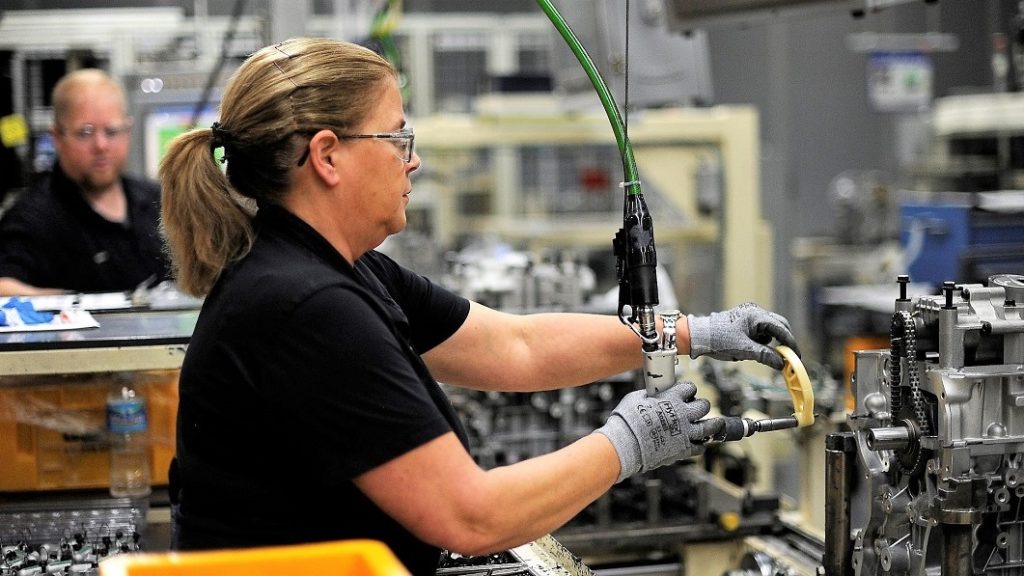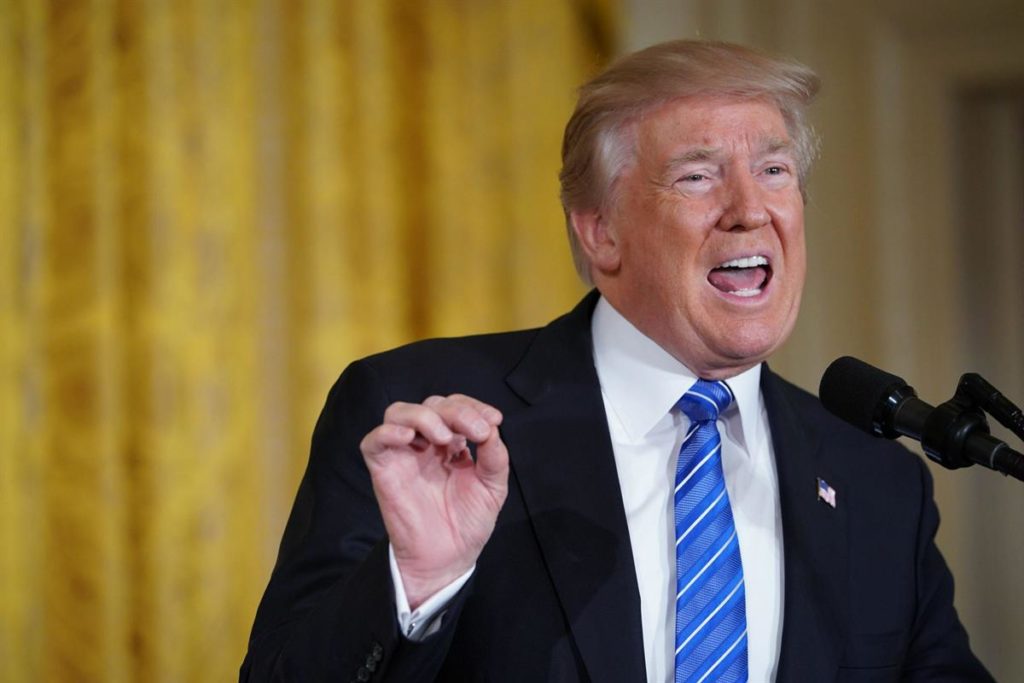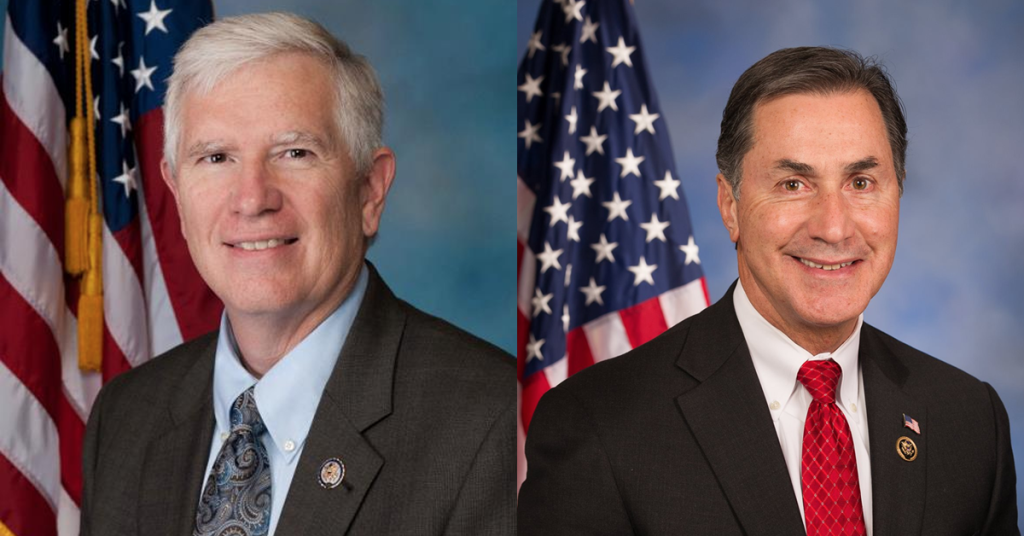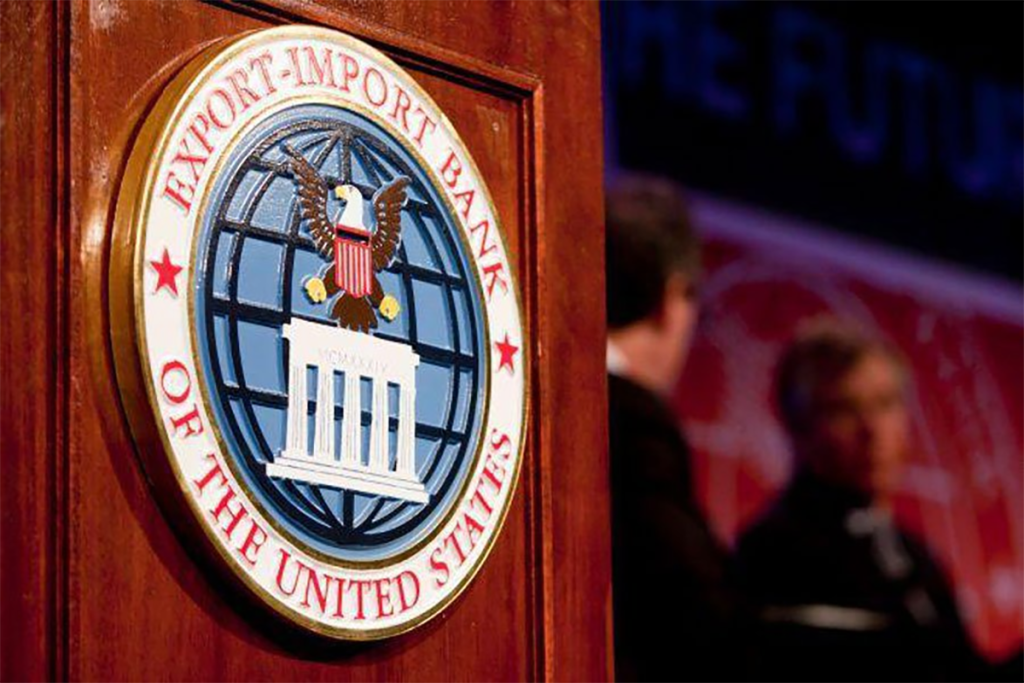Ivanka Trump makes workforce announcement in Alabama

Ivanka Trump visited a robotics training center in Alabama to make a workforce development announcement. News outlets report that President Donald Trump’s eldest daughter and senior adviser on Tuesday visited the Alabama Robotics Technology Park outside Decatur. The younger Trump announced an expansion of a skills training program created by Toyota Motor North America. The program called the Federation for Advanced Manufacturing Education, FAME, will be managed by the National Association of Manufacturer’s Manufacturing Institute. She says apprenticeship programs will be expanded across the nation. The younger Trump tweeted that it was an “incredible day” visiting with students at the center. Republished with the permission of the Associated Press.
Finally, Alabama ranks #1 for something other than football

The Yellowhammer State has been selected as the nation’s top state for manufacturing in a new ranking. Global Trade, a publication focusing on international business, put Alabama in the top spot of a combination of factors — “like an existing industrial base, the availability of talent, investment incentives, and favorable tax and regulatory environments.” In addition, the publication credited the AdvantageSites program for the state’s success in the manufacturing industry. This program pre-certifies sites for development and is known for rapid permitting, which is coordinated by the Alabama Department of Environmental Management (ADEM) to accelerate projects. “Alabama has a strong heritage in manufacturing, which remains a key pillar in the state’s growing economy,” Governor Kay Ivey said. “Alabama workers have shown the world that they have the expertise to manufacture high-quality products that set industry standards, and this ranking is more confirmation of that fact.” “Alabama is open for business! We should all be proud of the strong workforce development initiatives that continue to help our state succeed,” Alabama 2nd District U.S. Rep. Martha Roby posted on Facebook after hearing the news. Open for business There are more than 270, 000 manufacturing workers in Alabama, representing over 13 percent of the state’s workforce. That’s the fifth highest concentration among the states, according to data from the National Association of Manufacturers. “Alabama’s manufacturing workers bring energy and passion to their jobs, and they’re always willing to learn new skills that will enhance productivity,” added Greg Canfield, secretary of the Alabama Department of Commerce. “These qualities set them apart from their counterparts in other states and allow them to manufacture a sweeping variety of top-flight products that are in demand all over the world.” Global Trade’s selection of Alabama as the top manufacturing state comes one month after Business Facilities, a publication focused on economic development, named Alabama the No. 1 state in a business-climate ranking. “The state has seen a continued influx of manufacturing investment — much of it from the international auto industry — and it’s not hard to understand why,” Global Trade writes. A 2017 Gallup poll found that Alabama has the highest percentage of highly involved and enthusiastic workers among U.S. states. These rankings come at a time when Alabama is moving to streamline and improve its overall workforce development program, with many of these functions centralized in the Alabama Department of Commerce. New initiatives include AlabamaWorks and Apprenticeship Alabama.
Alabama metro ranks No. 1 for manufacturing jobs, analysis says

The Talladega-Sylacauga Micropolitan Statistical Area was rated the best place in the U.S. for manufacturing jobs in a detailed analysis by SmartAsset, a financial technology company that studied data on nearly 500 cities. SmartAsset singled out the high concentration of well-paying manufacturing jobs in the Talladega-Sylacauga area in its analysis. Here’s what the firm says about the micropolitan: “A large chunk of the workforce in this Alabama metro area work in manufacturing – just over 39 percent. Only three other metro areas in this study can beat this stat. “Manufacturing jobs here also pay pretty well, especially when you consider the area’s average housing costs. We estimate the average manufacturing worker earns $58,461 after accounting for housing costs.” The Talladega-Sylacauga micropolitan area consists of Talladega and Coosa counties, with a total population of around 93,000. The area’s top employer is Honda Manufacturing of Alabama, which operates an auto assembly plant in Lincoln with more than 4,500 workers. “Alabama has a strong heritage in manufacturing, and it remains an important pillar in the state’s economy,” said Greg Canfield, secretary of the Alabama Department of Commerce. “Alabamians have the expertise to produce top-class products that are in high demand around the world, and the workers in the Talladega-Sylacauga area are especially good at it.” Manufacturing workers in Alabama total more than 260,000, representing more than 13 percent of the state’s workforce. That’s the fifth-highest concentration among the states, according to data from the National Association of Manufacturers. Rising incomes To identify the best places to work in manufacturing, New York-based SmartAsset looked at data for 483 metro areas in the United States. Specifically, the firm looked at data on employment growth in manufacturing, income growth in manufacturing, density of manufacturing jobs and housing costs. The number of manufacturing jobs in the Talladega-Sylacauga micropolitan area expanded by 3.4 percent in the past year, reaching 39.4 percent of total jobs, according to SmartAsset’s data. Incomes, meanwhile, climbed 6.2 percent over the year. The area’s annual income after housing figure of $58,461 was second-highest among cities making the list’s Top 25, and it was more than $10,000 higher than the city ranking just behind it on the overall list. “Manufacturers rely on the skills of their workers for success, and the talents of manufacturing workers in the Talladega-Sylacauga region are highlighted by this impressive ranking,” said Ed Castile, deputy Commerce secretary and director of AIDT, the state’s primary job training agency. After the Talladega-Sylacauga micropolitan, other areas rounding out the Top 5 on SmartAsset’s list of the top places for manufacturing were: Greenville-Anderson-Mauldin, South Carolina Ogden-Clearfield, Utah Rockford, Illinois Elizabethtown-Fort Knox, Kentucky The Talladega-Sylacauga area ranked No. 11 in the 2016 installment of the SmartAsset analysis. This story originally appeared on the Alabama Department of Commerce’s Made in Alabama website. Republished with permission from the Alabama NewsCenter.
Donald Trump to promote tax plan in address to manufacturers group

President Donald Trump will promote his plan for a sweeping rewrite of the tax code to an audience eager for the proposed change. Trump is set to address the National Association of Manufacturers on Friday in Washington. A senior administration official says Trump will promote the tax plan as one that will help make American businesses more competitive. The official insists on anonymity to discuss the speech ahead of time. The president and congressional Republicans this week released the outlines of a nearly $6 trillion tax cut plan that would deeply reduce taxes for corporations, simplify tax brackets and nearly double the standard deduction used by most tax filers. Many details remain to be fleshed out. In the remarks, Trump is expected to highlight a provision that would allow businesses for the next five years to write off the full cost of new equipment in the year it’s purchased. Under the broader proposal, corporations would see their top tax rate cut from 35 percent to 20 percent. Seven personal tax brackets would be reduced to three: 12 percent, 25 percent and 35 percent. But the information released didn’t include the income levels applied to the rates, making it difficult to know how a typical family’s tax bill may be affected. The plan also recommends a surcharge for the very wealthy. The standard deduction would nearly double to $12,000 for individuals and $24,000 for families, basically increasing the amount of personal income that would not be taxed. Deductions for mortgage interest and charitable giving would remain, but the plan seeks to end most other itemized deductions. In the address, Trump will also review policy changes since he took office in January that are intended to improve the business climate, the official said. Those changes include lifting restrictions on energy production, reversing environmental rules and rolling back regulations. He’ll also review economic gains of the past eight months. Jay Timmons, president and CEO of the association, said Trump has been a “tireless advocate” for manufacturers. Timmons said U.S. manufacturers “have never been as enthusiastic or as optimistic about their future as they are this year, and that is because of the huge opportunity we have to get tax reform done.” Trump wants to sign tax legislation into law by the end of the year. Republished with permission from the Associated Press.
William J. Canary: The timing for tax reform is right

Congress returns to Washington facing enormous challenges. These include passing a domestic tax cut that is important for this and future generations. President Donald Trump has suggested a tax cut to reduce the unbelievable domestic income tax rate for corporations, including manufacturers, of 39 percent, to a competitive 15 percent. In addition, Congress must lower the tax rate for the two-thirds of manufacturers that pay taxes at individual tax rates as pass-through entities. The pass-through rate on small business owners can be as high as 44 percent, according the National Association of Manufacturers. These small businesses are the backbone of our economy and create the majority of jobs. A 2015 NAM study concluded that a reform package like this could add more than $12 trillion in Gross Domestic Product over 10 years, deliver more than 6.5 million jobs to the U.S. economy, and increase investment by more than $3.3 trillion, NAM Chairman David Farr said in a recent speech to the Economic Club of New York. (Farr is chairman and CEO of Emerson, a global manufacturer.) Combined with overarching regulations, the burdensome tax rate makes it harder for manufacturers to meet intense competition for business and jobs. A tax rate of 39 percent – higher when you throw in state and local taxes – is a crushing obstacle when competing against manufacturers in the top 35 industrialized nations who enjoy a tax rate, on average, half that of the United States. A tax cut will create jobs for Alabama manufacturers that compete internationally against lower tax rates. This nation’s bountiful resources, which include willing investors and hard-working men and women (a recent study showed that Americans are among the hardest-working in the world), can be stifled by a non-competitive tax code. The timing for tax reform is right. As the market is proving, businesses and individuals have been investing in anticipation of a tax cut and its effect on manufacturers, jobs, and our families’ standards of living. ••• William J. Canary is president and CEO of the Business Council of Alabama, the state’s exclusive representative of the National Association of Manufacturers and the U.S. Chamber of Commerce.
Mo Brooks, Gary Palmer take on EPA’s new $25 billion per year ozone regs

Alabama Congressmen Reps. Mo Brooks (AL-05) and Gary Palmer (AL-06) joined fellow House lawmakers Thursday in introducing a joint resolution the would permanently block the Environmental Protection Agency’s (EPA) recently finalized $25 billion per year ozone regulations. An updated study commissioned by the National Association of Manufacturers projects the new EPA mandate will reduce the United States GDP by $1.7 trillion from 2017 to 2040 and kill 1.4 million jobs per year. “The EPA has not been able to identify how the proposed standards will be met,” Palmer said in a March in a Science, Space, and Technology committee meeting regarding the new rules. “This sounds like ‘shoot first, ask questions later’ rule-making.” The EPA’s proposed regulations would impose a limit of 65-70 parts per billion (ppb) for ozone, down from the current level of 75 ppb. The Joint Resolution, H.J.RES.74, is the House version of a Senate’s resolution S. J. Res. 25 introduced by Sen. Jeff Flake (R-AZ) Wednesday.
3 Alabama U.S. House members sign on to rare procedure to revive Ex-Im Bank

Monday night in a rare procedural move, with the support of three Alabama members the U.S. House of Representatives made a play to sidestep Republican leadership in hopes of reviving the Export-Import Bank (Ex-Im), whose charter expired in June. The procedure, known as a “discharge petition,” was last executed 13 years ago and only five times in the past eight decades. It allows lawmakers to bypass committees and House leadership to bring up legislation signed by a majority of the House for a vote on the floor. In order to for the petition to be successful 218 Members, a simple majority, must sign-on. Monday night, 246 members voted in favor of the discharge of H.R. 597: the Export-Import Bank Reform and Reauthorization Act — 62 Republicans and 184 Democrats — nearly 30 more than the necessary 218. Among those Members who signed-on to revive the Ex-Im bank were Rep. Mike Rogers (AL-03), Rep. Robert Aderholt (AL-04), and Rep. Terri Sewell (AL-07). A final vote to extend the bank’s charter through 2019 will likely come to the House floor Tuesday. The bill itself reauthorizes Ex-Im Bank for four more years; sets new, lower, lending caps; aims to increase accountability and transparency at the bank; and directs the president to initiate negotiations to reduce and eventually eliminate government export subsidies worldwide. Beyond the House, the future of the bill lies in the hands of the Senate where Majority Leader Mitch McConnell (R-KY) has said he doesn’t plan to bring the bill to the floor for the vote. That could spell trouble for companies across the country, according to the National Association of Manufacturers (NAM). NAM contendss the expiration of the bank’s charter left several thousand small and medium-size exporters without adequate access to capital, and without its renewal more than 500 U.S. companies will lose credit insurance from September through December. That could translate to lost jobs. According to the Business Roundtable, in fiscal 2014, the Ex-Im Bank provided financing for exports valued at $27.5 billion that supported about 164,000 US jobs. The Business Council of Alabama says in Alabama Ex-Im Bank has supported 58 companies, more than 3,900 jobs, and $622 million in exports over the last seven years.
Court orders EPA to redo air-pollution limits in 13 states

A federal appeals court on Tuesday ordered the Environmental Protection Agency to relax some limits it set on smokestack emissions that cross state lines and taint downwind areas with air pollution from power plants. At the same time, the court upheld the EPA’s right to impose the clean-air standards, rejecting an argument by states and industry groups that the rule was overly burdensome. The ruling by the U.S. Court of Appeals for the District of Columbia Circuit orders the EPA to redo sulfur-dioxide and nitrogen-oxide standards for 13 states, mostly in the South and Midwest, that contribute to soot and smog along the East Coast. Texas and South Carolina would see limits for both forms of pollution adjusted, while new limits for either sulfur dioxide or nitrogen oxides would be set in 11 other states: Alabama, Florida, Georgia, Maryland, New Jersey, New York, North Carolina, Ohio, Pennsylvania, Virginia and West Virginia. The ruling follows a Supreme Court decision last year upholding the so-called Cross-State Air Pollution Rule, which blocks states from adding to air pollution in other states. The April 2014 ruling was an important victory for the Obama administration and capped a decades-long effort by the EPA to ensure that states are good neighbors and don’t contribute to pollution problems elsewhere. Industry groups and many of the affected states have cast the rule as an attempt to step on states’ rights and shut down aging coal-fired power plants as part of what many Republicans call a “war on coal” by the Obama administration. An EPA spokeswoman said the agency was pleased that the court decision keeps the Cross-State Air Pollution Rule in place “so that it continues to achieve important public health protections.” The EPA remains committed to working with states and power companies as it moves to implement the rule, spokeswoman Melissa Harrison said. “We are reviewing the decision and will determine any appropriate further course of action once our review is complete,” she said. The Supreme Court said the EPA, under the Clean Air Act, can implement federal plans in states that do not adequately control downwind pollution. But the court also ruled that the EPA can consider the cost of pollution controls and does not have to require states to reduce pollution by the precise amount they send to downwind states. The appeals court, in its ruling, said the EPA’s rule imposed overly strict limits on the 13 upwind states. As a practical matter, the limits would result in downwind states “overachieving” air quality standards for harmful pollutants, the court said. Frank O’Donnell, president of Clean Air Watch, an environmental advocacy group, scoffed at the idea that the EPA rule was overly strict. “The reality is we need more pollution control of power plants, not less,” he said, noting that the pollution standards used by the EPA were developed in the 1990s. “The targets involved in this case are so outmoded that they are almost irrelevant,” O’Donnell said. “We know in reality that these power plants are going to have to clean up even more to meet modern standards,” O’Donnell added, referring to new EPA rules on soot and smog expected in the next few months. The EPA also is expected to release a final rule as soon as next week on a historic plan to limit carbon pollution from coal-fired power plants. EPA Administrator Gina McCarthy has said the agency will be flexible and work with states on the first-ever controls on power plants for the gases blamed for global warming. Ross Eisenberg, vice president of the National Association of Manufacturers, called the court ruling a disappointment because it upholds the current regulation. “We are committed to clean air and water…but need balanced, achievable regulations that don’t leave manufacturers in constant regulatory limbo as the courts interpret overly aggressive policies,” he said. With the greenhouse gas and ozone regulations expected soon, “the need for that balance has never been greater,” he added. The EPA says the Cross-State Pollution Rule would cost power-plant operators about $800 million a year. Those investments would be far outweighed by the hundreds of billions of dollars in health-care savings from cleaner air, the agency said. The rule could prevent more than 30,000 premature deaths and hundreds of thousands of illnesses each year, the EPA said. Republished with permission of The Associated Press.


